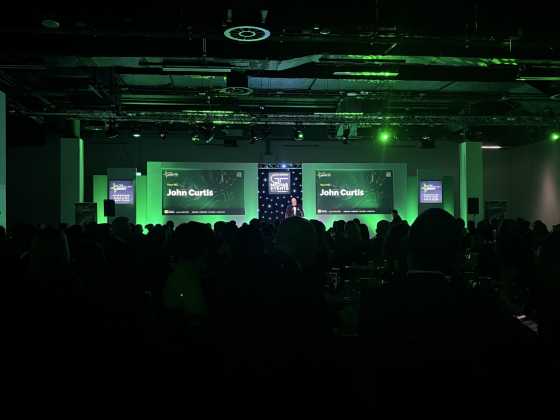How retrofit technology can help commercial fleets comply with clean air zones

What is the decision process to replace or retrofit vehicles? Which vehicles are ripe for retrofit? And how do camera systems recognise compliance? Colin Smith, programme manager for freight & clean vehicle retrofit at Energy Saving Trust answers some key questions
Air pollution in our towns and cities remains a problem that affects us all but especially the more vulnerable such as young children, the elderly and those with underlying health problems. Illegally high levels of nitrogen dioxide have led to the introduction of Clean Air Zones (CAZ), Low Emission Zones (LEZ) and even an Ultra Low Emission Zone (ULEZ) in London.
These charging zones aim to deter the most polluting vehicles from entering an area where pollution levels are considered very high and pose a risk to human health. Local authorities are central to deciding which types of vehicles to charge, ranging from only buses, coaches and taxis in a category A CAZ, to all vehicles in a Category D CAZ. The emissions standards that vehicles are required to meet to enter a CAZ, LEZ or ULEZ without charge are the same no matter whether in London, England or Scotland - that being Euro 4/IV for petrol vehicles and Euro 6/VI for diesel vehicles.
Currently, charging clean air zones are operational in London with the LEZ covering the Greater London area and the ULEZ covering Inner London (within the North/South Circular) with proposals to expand the ULEZ to cover Greater London in August 2023, along with being rolled out in Bath, Birmingham, Portsmouth and most recently Bradford. The Bristol CAZ will go live at the end of November 2022; Tyneside is planned for winter 2022-23 and Sheffield in Spring 2023. The Greater Manchester CAZ is currently still under review.
Complying with a CAZ, LEZ or ULEZ
There are several actions that an individual or vehicle operator can take to comply with a clean air zone. The first is to avoid driving within the zone but if your business means delivering or picking up in the zone, or if your business or residence is in the zone itself, this may not be possible.
The second option is that an operator could accept and pay any charges incurred which could be feasible if infrequent journeys into the zone are conducted and the costs can be passed on to customers, but not viable if daily entry is required and margins are tight, without the possibility to pass on cost.
A third option is to re-arrange fleet operations and use compliant vehicles in a CAZ and only operate non-compliant vehicles outside of any CAZ. With more charging CAZ coming into operation this option is becoming harder and not every owner operator has a fleet with the ability to re-arrange.
Crucially, each of these first three options do not help reduce air pollution, which is the aim of a CAZ – they either allow continued pollution or move the pollution to another area.
The fourth option is to replace a non-compliant vehicle with a “new” compliant vehicle. For a petrol vehicle, this could be a Euro 4 vehicle dating back to 2005/2006 and for a diesel vehicle it could be a Euro 6/VI vehicle which is brand new or dating back to around 2015.
The fifth compliance option is looking at retrofit solutions for diesel vehicles where an exhaust after-treatment system is fitted to reduce the emissions to Euro 6/VI equivalence. This generally involves fitting a diesel particulate filter (DPF) and a selective catalytic reduction (SCR) system with the urea (Adblue) injection. This is the same technology that is fitted to Euro 6/VI vehicles coming off the production lines now. Once a vehicle has been retrofitted the air pollutant emissions are reduced immediately.
These final two options are the only ones that reduce air pollution from vehicles overall.
What is the decision process to replace or retrofit and which vehicles are “ripe for retrofit”?
The decision to replace or retrofit a vehicle depends on several factors, including the cost implications; how long the vehicle has left in service – bearing in mind that retrofitting may extend the vehicle’s service life – what level of CAZ or LEZ charges would be incurred and the resale value of the vehicle before and after retrofit. It will also depend on whether an appropriate CVRAS approved retrofit system is available.
Generally, vehicles with higher replacement costs and those which are on fleet for longer than average are the vehicles that are “ripe for retrofit”. Buses, coaches, refuse collection vehicles and specialist HGVs are more suited to retrofit, whereas cars and vans will probably be replaced.
Assurance of retrofit suppliers and their products
The Clean Vehicle Retrofit Accreditation Scheme (CVRAS) was set up to provide assurance to operators, as well as local authorities that might be implementing a CAZ or distributing grants to help operators either comply with a CAZ or reduce air pollution from their vehicles. The Scheme is run by Energy Saving Trust on behalf of the Joint Air Quality Unit (JAQU) with support from the Zemo Partnership. The aim of the Scheme is to ensure that suppliers and their products meet set standards and continue to do so over time. The standards were developed under consultation in 2016 and the Scheme has been in operation since 2017, with over 10,000 vehicles now retrofitted.
Within CVRAS, an approved company needs to have a recognised quality management system, a comprehensive warranty provision and adequate insurance cover. Their products also need to demonstrate the required emissions reductions for the type of vehicle they are retrofitting. The scheme has set representative test drive cycles for various vehicle types such as buses, coaches, HGVs, refuse collection vehicles (RCVs), taxis and cars and vans. There is also a robust set of technical requirements that approved systems need to meet to ensure in-service performance emissions reductions continue to be delivered.
Once retrofitted, how do camera systems recognise compliance?
When a vehicle has been retrofitted, it is vital that automatic number plate recognition (ANPR) cameras can recognise it as compliant for a CAZ. To achieve this, the CVRAS approved suppliers will issue an individual vehicle installation record for each vehicle retrofitted and log all their retrofits. They submit their lists to Energy Saving Trust weekly who upload these vehicle registrations to the CAZ Vehicle Checker database. This means that when the ANPR cameras pick up a registration, it can be first checked against the DVLA database and then the CVRAS approved retrofitted vehicle list. If a vehicle is not compliant according to the DVLA database and is not on the CVRAS retrofitted vehicle list then it will incur a penalty charge notice (PCN) if it enters a chargeable CAZ, LEZ or ULEZ.
Cleaner air for all
It is important to remember that the overall objective of implementing low emission zones and associated schemes is cleaner air for all and reducing the health impact of illegally high levels of air pollution. Retrofitting has in important role in tackling the impact of the legacy fleet. Going forward, the best vehicle for cleaner air is one which has no tailpipe emissions at all so accelerating the uptake of zero tailpipe emissions vehicles will be the best approach for cleaner air in the long term, but until then, efforts to reduce emissions of current fleets can make a significant impact.
About Energy Saving Trust
Energy Saving Trust is an independent organisation dedicated to promoting energy efficiency, low carbon transport and sustainable energy use. We aim to address the climate emergency and deliver the wider benefits of clean energy as the UK transitions to net zero.
The Energy Saving Trust empowers householders to make better choices, deliver transformative programmes for governments and support businesses with strategy, research and assurance – enabling everyone to play their part in building a sustainable future.






